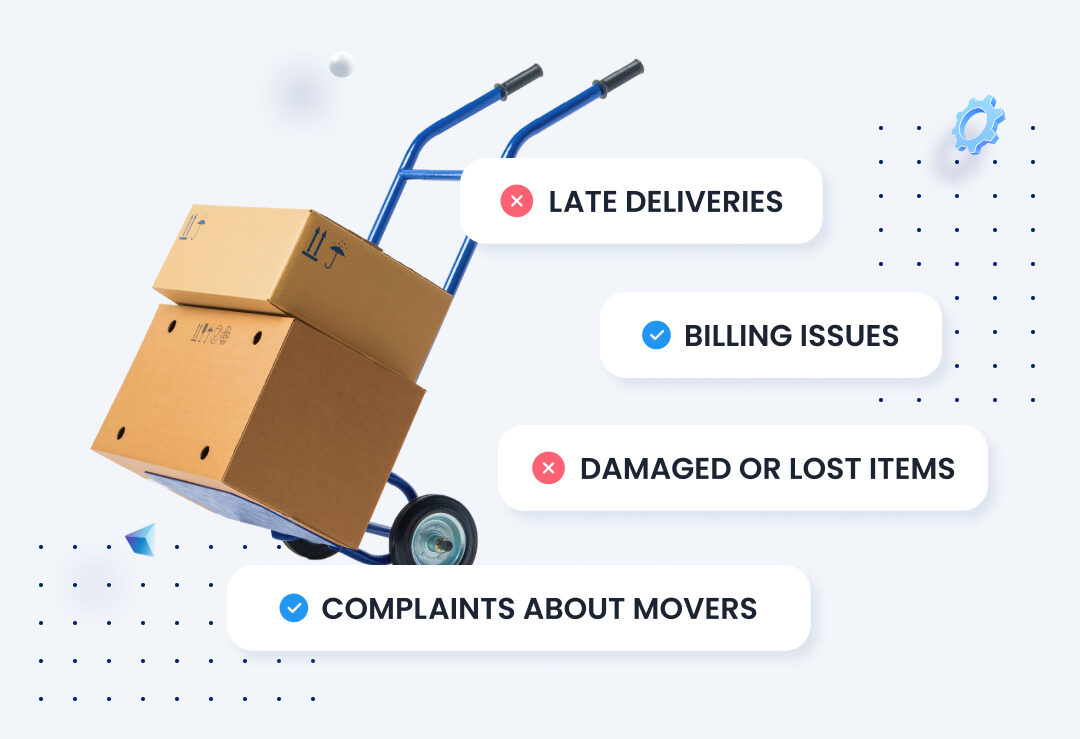Reducing the number of claims is essential for moving companies focused on efficiency and customer satisfaction. A robust moving CRM system plays an important role in this process, helping to manage operations more effectively and improving interactions with customers. Implementing focused strategies such as advanced staff training, comprehensive quality controls, and consistent customer communication enables companies to significantly lower their claims. These efforts do more than reduce costs—they enhance the overall customer experience, thereby reinforcing the company’s reputation as a reliable and trustworthy service provider. Understanding how to get less claims can help your business achieve significant improvements and secure a competitive advantage in the industry.
Leveraging CRM tools for better claims management
With a good moving CRM track everything and keep everyone informed, which helps prevent problems and efficiently resolve moving claims. Moving CRM systems offer a comprehensive platform that centralizes customer information and communication, making sure that every detail is accounted for during the moving process.
Key features for reducing claims
We’ll discuss the best CRM features for reducing claims and share success stories. Key features include:
- Real-time Tracking: Allows for immediate adjustments during moves.
- Customer Communication: Keeps clients informed with regular updates.
- Document Management Systems: Ensures easy access to all necessary paperwork.
- Analytics and Reporting Tools: Identify trends and areas prone to claims, enabling proactive measures.
- Crew Performance Tracking: Links specific actions to claims scenarios, enhancing training and accountability.
Integrating these CRM tools helps prevent and resolve claims effectively while also enhancing customer satisfaction through transparency and reliability throughout the moving process.
Implementing stricter quality control measures
Strong quality control helps prevent damage and ensures that every move meets high standards. Rigorous quality control measures reduce the risk of claims and boost customer trust in your services.
Here are some key stricter quality control measures you might consider implementing:
- Pre-Move Item Inspection: Conduct thorough checks and document the condition of items before moving.
- Equipment Checks: Ensure all moving equipment and vehicles are regularly inspected and maintained.
- Packing Standards: Enforce strict guidelines for packing delicate and valuable items.
- Loading Protocols: Outline precise procedures for loading and unloading to minimize the risk of damage.
- Crew Performance Reviews: Regularly review crew performance to identify areas for improvement.
- Customer Feedback Loop: Set up a system to collect and address customer feedback immediately after the move.
Adopting these measures significantly enhances the quality and reliability of your moving services.
Improving customer communication
Improving customer communication is key to reducing the number of claims you receive. Clear communication can prevent misunderstandings and claims from failing. Keeping open communication throughout the move is vital in the moving industry, where every detail matters. For best practices, refer to official moving guidelines, which offer tips on maintaining transparent communication. These tips include keeping your communication channels open and responding quickly to any concerns or questions during the move. Effective strategies involve training your team to be proactive, setting clear expectations at every step, and using technology to make communication easier. Listening to customer feedback helps fix current issues and improve services over time. These practices enhance the overall customer experience, leading to higher satisfaction and fewer claims.
Using data to drive improvements and get less claims
Looking at data can show you where most damages happen, giving you valuable insights for better decision-making. Learn how to use these insights to make smart changes and improve your processes. Utilizing a CRM system is especially beneficial as CRM helps your multi location business manage and analyze data from different sources. This integration allows you to find specific areas that need attention and address them proactively.
Enhancing staff training
Effective training can drastically reduce claims, which is a vital part of understanding how to reduce your claims ratio. Good training extends beyond simply moving items from point A to point B; it fosters a culture of care and precision. Integrating customer service excellence into training ensures your staff exceed customer expectations and communicate effectively throughout the moving process.
Creating a culture of accountability
Everyone needs to be on board with reducing claims. Cultivating a culture of accountability within your moving company is essential. There are several ways to encourage your team to take this goal seriously, including implementing rewards for low claims rates and providing regular training updates. Encouraging this mindset starts with clear communication of expectations and the visible support of management in these endeavors. Recognizing and celebrating successes motivates individuals and reinforces the collective commitment to quality and care. Involving every member of the team in developing solutions and strategies for reducing claims builds ownership and responsibility. These efforts help solidify a proactive approach to managing risks and improving service quality across all levels of the organization.
Moving forward together
Advanced tools, especially CRM software, can be invaluable in reducing claims and enhancing your operations. You can reduce expenses with CRM software, which also improves management oversight. This technological solution helps you get less claims and boost overall business efficiency. If you need more tips or a demo of CRM tools, feel free to reach out! Together, we can make your moving services more reliable and cost-effective, ensuring happy customers and manageable costs.

